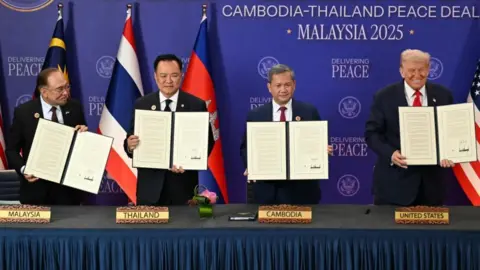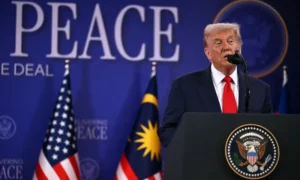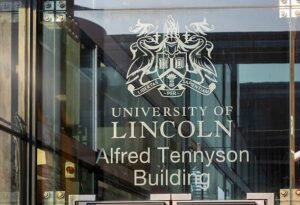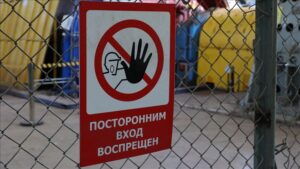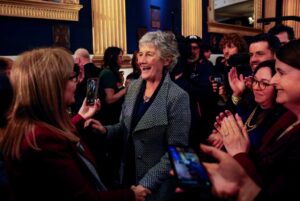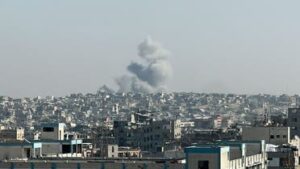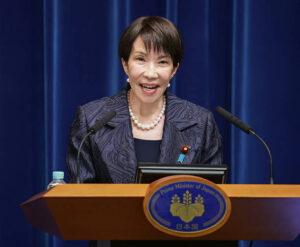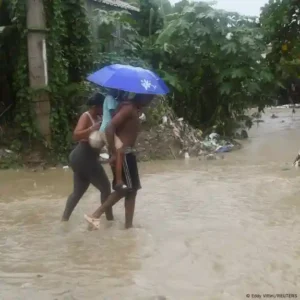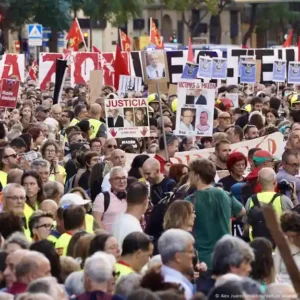US President Donald Trump has presided over a “peace deal” between Thailand and Cambodia, who have a long-standing border dispute, which he calls “historic”
After the ceremony, Thailand’s foreign minister refused to call it a peace agreement, telling the BBC “I would call it a pathway to peace” instead
Trade pressure from Trump led to a ceasefire in late July, ending five days of clashes that killed over two dozen people
The US president has made clear he will use US trade deals as a key way to pressure countries to make peace, our reporter writes from the summit
Trump is on a one-week trip to Asia that will include meeting his Chinese counterpart Xi Jinping on the sidelines of Apec in South Korea and a stop in Japan to meet the country’s newly elected first female leader.
It was, as everyone knew it would be, all about President Trump.
He literally towered over everyone else at the ceremony in Kuala Lumpur where Cambodia and Thailand signed their agreement. He gave the longest speech, and made the biggest claims.
It was all superlatives. “This is a momentous day for South East Asia,” said the US president. “A monumental step”.
But what does the ‘Kuala Lumpur Peace Accord’, as President Trump has renamed it, actually amount to?
Remember, both countries signed a ceasefire back in July. That too was helped, or at least accelerated, by pressure from Trump. Looking at the details of the latest deal, though, it isn’t much of leap forward.
The two countries have agreed to withdraw their heavy weapons from the disputed border, and to establish an interim observer team to monitor it.
They have a new procedure for clearing landmines, and will set up what they call a joint task force to address the proliferation of scam centres. They will replace missing border markers with temporary ones.
This is progress, and Thai diplomats have told me they do feel President Trump’s involvement may help these agreements stick. But the historic differences over the border remain unresolved, and at risk of flaring up again-BBC
